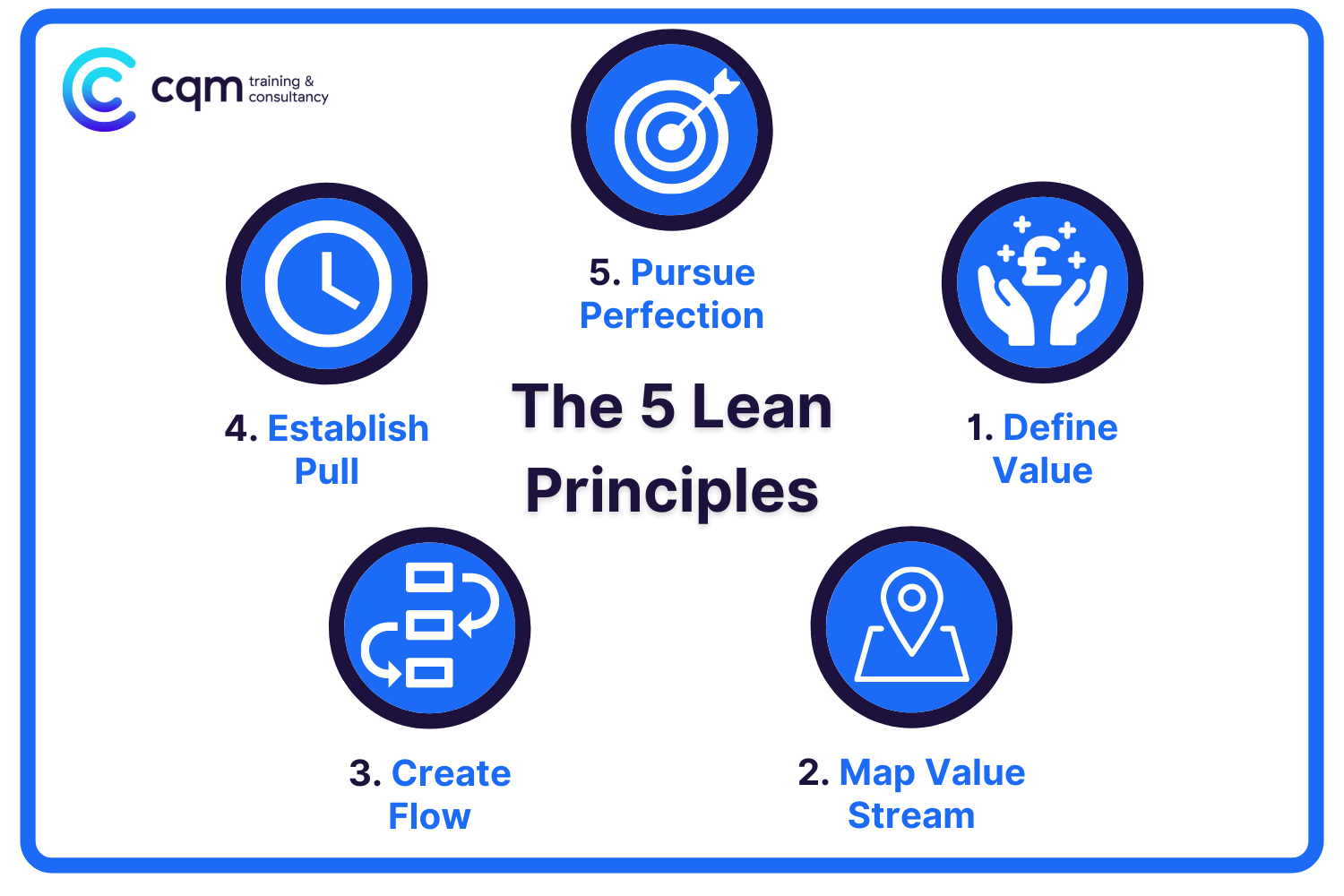Understanding the 5 Lean Principles: An Introduction

What is Lean and what are the Five Lean Principles?
Lean is a systematic approach to identifying and eliminating waste (non-value-added activities), whilst improving flow and maximising customer value. Simply put, Lean means creating more value for customers with fewer resources.
Lean is a widely recognised, established and accepted method of driving superior operational performance. Although Lean as an approach has been applied primarily in the manufacturing industry in the past, it has been successfully implemented in a diverse range of organisations and industries, continuing to grow as businesses of all kinds strive for operational excellence.
There is lots to learn about Lean and how the various tools and techniques can be applied in the workplace to make a real, measurable difference and significant returns on investment (ROI). We take a look at the 5 basic Lean principles below to get an idea of the key fundamentals and how together these can create a framework for an efficient and effective organisation in which to build on.
-
Define Value
The first Lean principle is to define value. The first thing therefore to consider is what exactly is value? Value is basically what the customer is willing to pay for and what they are not. Understanding your customer and what they want therefore is critically important to deciding how to improve such value from the customer’s perspective and how you will deliver this.
It is important to note you should not just guess the customer’s perception and what is valuable to them. There are a variety of techniques to support you in order to effectively define value.
-
Map the Value Stream
The second Lean principle is identifying and mapping the value stream; the series of activities or processes required to bring the product to the customer. Activities that do not add value to the end customer are considered waste.
Some activities that do not add value are unavoidable as they are required by the process but should be subject to continuous improvement in a concerted effort to reduce wastage, whereas those that do not add value and are not required, as such representing pure waste, should be removed, or minimised as far as possible.
Using Lean to look at waste in a unique way is not just a real revelation but also a game changer, which is why we put together a Lean Waste Walk, to reveal the true opportunities that any organisation has to make significant improvements.
-
Create Flow
Now that non-value adding activities or processes have been removed or minimised, the key focus then is on the efficient flow of these activities to ensure consistent and timely execution ready for the next step.
By keeping the value stream moving at the optimal speed, this will help the smooth transition between steps without interruptions or delay. There are several extremely useful strategies that can be employed to support this journey and these are not limited to an assembly line in a factory context either, it is relevant to all businesses such as those suffering from office bottlenecks for instance.
-
Establish Pull
Inventory is one of the largest sources of waste in any system of processes. This could be a stock of materials contained within a warehouse or number of sales quotes that could benefit from a triage system.
A pull-based approach intends to limit inventory and work in progress (WIP) items while ensuring that the required materials and information are available for a smooth flow of work. This allows organisations to strive for just in time delivery, where the right quantities are delivered to the right place at the right time.
Pull-based systems are created from the needs of the end customers, triggered by working on what they want/order. By following the value stream and working backwards you can ensure that the products produced will be able to satisfy the needs of customers in a timely fashion.
-
Pursue Perfection
By working through the first four steps, you should be identifying, eliminating and preventing waste, for the benefit of increased customer value delivered through more effective utilisation of resource.
However, the fifth and final Lean principle is arguably the most important. It considers how the new ways of working can be embedded, to become increasingly sustainable as part of a wider process improvement culture. This, in essence, is everyone working and pulling together, striving towards perfection, creating more value for customers with greater innovation and fewer resources being employed. Use less to do more.
Applying Lean Principles – the critical bit!
The five Lean principles provide a framework for creating an efficient and effective organisation. But there is so much more to learn and understand, including how to apply these principles in context.
There are a variety of basic concepts in addition to these five Lean principles too, as well as numerous tools and techniques to get to grips with. Lean is a very accessible and useable approach that makes a true difference, and we cover this in our Essential Lean Awareness course which is an absolute must take programme for anyone interested in Lean or just wants a refresher. Find out more about this live online interactive led course here.